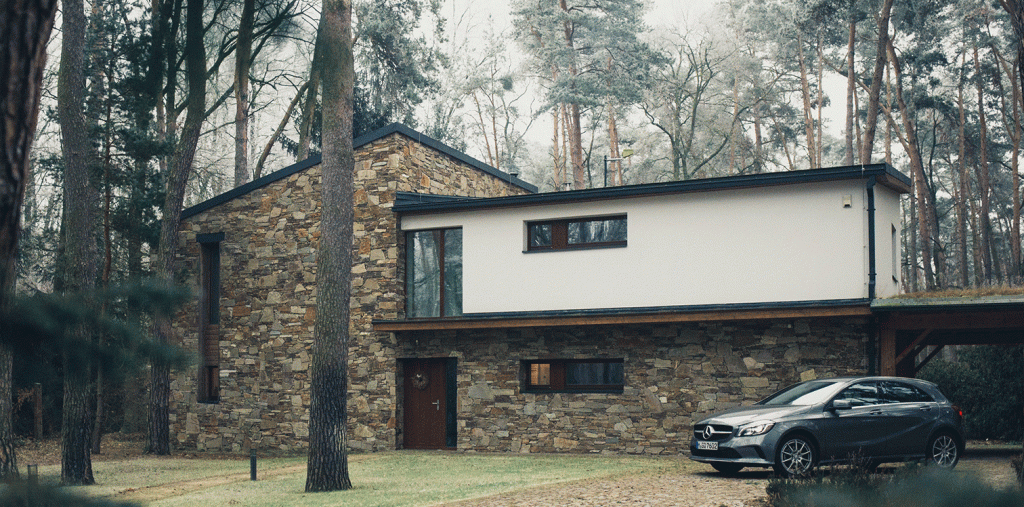In today’s world, there are so many different architectural styles existing together, and blending into each other, that it can be hard to get your head around what is the most appropriate choice for your own home. There’s always a balance to be struck between choosing something that’s appropriate for the area you live in, respecting the surrounding buildings, and a style that you really love. Though specific styles can vary hugely around the world, we want to give you an overview of the different terms that are commonly used, and some tips on how to determine what’s the best choice for you.

Vernacular Irish cottage with lime-washed stone walls and thatched roof (via irish-archaeology.ie)

Vernacular Malay home, constructed with local hardwood, and designed to work with local climate (via Pinterest).
Vernacular architecture is a style that is characterized by local building traditions and locally available materials. It refers to the style of residential buildings that are characteristic of a particular place, the ‘look’ of the most common and ordinary buildings in a town or village. In general, vernacular houses were not so much designed by architects but built using the skills of local builders, with many of their design features resulting from the demands of the local climate. Irish vernacular houses, for example, are made from local stone, with small windows and thatched or slate roofs, while a Malay vernacular house is made from local timber, on stilts for flood protection and cooling, with steep pitched roofs to dispel monsoon rainwater and provide shading from the sun. The style of vernacular houses changes from urban to rural, and across different geographical areas.
In more recent times, architects have looked back to vernacular architecture for lessons on how to create homes that make the most of the local climate and materials, leading to new innovations that marry vernacular forms and characteristics with newer building techniques and technologies. Traditional architecture is closely related to the vernacular, but can be a pretty loaded term because it’s not just closely related to particular places, but also to cultures and historical movements. What we refer to as traditional buildings tend to elaborate on the vernacular by using ornament and defined design features, and mark an evolution from mere functionality. Building a new home in a traditional style usually means not only incorporating features that were common in the past, such as symmetrical facades or window panes broken into smaller panels, but also using traditional forms such as pitched roofs and traditional plan layouts.

Likewise, materials give strong clues about particular traditions in buildings. Locally-sourced materials were most frequently used because of their suitability to the climate and the expense involved in transportation. A house that is traditional for one city might be completely out of place in another, so it’s really important to look around you and do a little research into the design features that are characteristic to your region. Choosing a traditional design for your home is a nod to the past, and allows your home to blend into its surroundings. Some architects will take traditional attributes, such as proportions, materiality, and plan organisation and transform them into something more contemporary, thus allowing the house to respect the visual characteristics of the neighbourhood while avoiding anything that might seem too pastiche or twee.

Revival styles are many and varied, and are simply imitations of past styles. In the UK, revivals might refer to Tudor, Georgian, or Victorian eras, incorporating the design elements of these periods in new homes. In the USA, revivals might mean the use of design attributes from a multitude of epochs, and Greek, Colonial, Federal, and Mediterranean revival style homes can be found across America.

The terms ‘modern’ and ‘contemporary’ are often used interchangeably, leading to some confusion, as contemporary homes are strongly influenced by modernism. Modern homes are characterized by a ‘stripped down’ aesthetic of simple lines and functionality, and the style has its basis in the 1940s, ‘50s, and ‘60s, when Modernism was underway as a movement. It was a strong shift from what and come before, and actively avoided decoration for its own sake, giving rise to the two phrases that embody the philosophy of the era: ‘Form follows function’ and ‘Less is more’. New advances in materials such as steel and large panes of glass allowed them to be produced with greater freedom and lower costs, and these form the visual markings of modern homes. Modern homes commonly employ cubic structures, large expanses of glass, flat roofs used as terraces, tubular steel balustrades, and sometimes exposed steel or concrete.

Contemporary design grew out of Modernism, but its definition can be confusing as current styles tend to keep shifting and evolving, and can mean different things in different places. However, no matter where you are, there are some accepted characteristics of contemporary homes: asymmetrical facades and floor plans, open plan layouts, large windows and skylights, and strong connections between indoors and outdoors that give rise to external rooms. Most contemporary homes nod to one or more historical styles, most commonly merging modernism with the vernacular, while opening up to the outdoors and adding pops of colour and pattern in the décor.

Choosing a style for your home is a deeply personal one, but requires a certain amount of social responsibility, as your home forms part of the built environment we all inhabit. For many, a very traditional home feels luxurious and attractive, while for others, a lived-in, open-plan contemporary home is perfect for family life. It is important to look around your site or lot. What style of homes are your neighbors building, and why? Try to visit some homes in your area to get a feel for the spaces within and how you feel in them. Be discerning: you might be drawn to the drama of a Greek revival home, complete with columns and portico, but is that really appropriate for the street you live on or the kind of life you like to lead? You don’t need to copy your neighbors, but respecting the scale, proportions, and material choices of the other houses in your area will help your home to blend in and knit itself into the fabric of your neighborhood.



